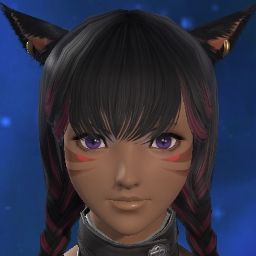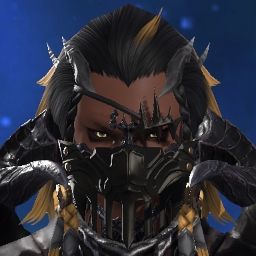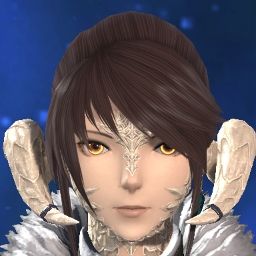So, with the lion's share of 5.0's content now out there (the only thing left is Eden Savage), let's talk about the upcoming 24-man NieR Automata crossover raids.
So, here's a Cliff's Notes abridged version of Automata's story. Supermassive spoilers for NieR and NieR Automata, as well as a small but impactful spoiler for Drakengard:
Due to events in the original Drakengard, the protagonist Caim, his dragon Angelus, and a godlike being known as the "Queen Beast" / "Grotesquerie Queen" are dumped into Shinjuku, Tokyo circa 2000. Though Caim and Angelus slay the Queen Beast, its particulate matter begins infecting citizens, transforming them into either monsters or turning their bodies to salt through a sickness known as "White Chlorination Syndrome" (WCS). Though initially contained, after an attempt to destroy the Queen Beast's corpse with explosives the world over begins suffering from WCS due to it being caused by contact with the Queen Beast's particulate matter. In order to forestall humanity's extinction at the hands of WCS, a plan known as Project Gestalt is cooked up: by separating human souls from their bodies, humanity will be able to survive until hopefully, with the aid of android helpers, they are able to find a cure for WCS.
The plan works by using the essence of the original Nier, who is the only person to get perfect results from the Gestalt process, to keep the rest of the souls stable. People are split into two halves - Gestalts (Souls) and Replicants (Bodies) - that exist independent of each other. As mentioned above however the process isn't perfect for anyone but Nier himself, and his essence is needed to stabilize other Gestalts so they don't relapse and become psychologically-degraded, violent Shades. Relapse into a Shade will also inevitably kill their corresponding Replicant, marked by the Black Scrawl "disease." (I'm not 100% on this one and running off memory.)
Smash cut to the future, where Replicants have created their own lives and societies. Nier's sister / daughter (depending on version), Yonah, suffers from the Black Scrawl, driving him out into the world looking for a cure (unaware there is none). This brings him into conflict with the Shadowlord (a.k.a. Gestalt Nier), who kidnaps Replicant Yonah halfway through the game to try to save Gestalt Yonah from relapsing. After learning much of the above truths Replicant Nier confronts his Gestalt, but Gestalt Yonah willingly passes on so that her Replicant can live her own life, driving Gestalt Nier to despair. He allows himself to be killed by his Replicant, and without Gestalt Nier's unique essence humanity is now doomed to extinction.
Smash cut to the future (again). Some time later aliens invaded the Earth, using Machine Lifeforms as their army, and were largely successful in taking the planet. What remained of humanity fled to the Moon, where they wage a guerrilla war against the Machines and their alien masters using androids and the elite YoRHa models. However, big reveals later in the game are that the aliens and humanity are both extinct - humanity having died out due to Nier's actions in his title game, and the aliens having been killed by their Machine army once they realized they no longer needed them. However the Machines still need to follow their prime directive of "eliminate the enemy," and as such literally cannot win the war. (Some few machines do grow beyond this prime directive, but those that don't far outweigh them.)
Opposing them are an android resistance aided by the elite YoRHa models, who simply lack the power to overcome the machine armies (and, if they gain a decisive edge, will be killed by a Logic Virus that turns them into cyber-zombies being sent out to the entire organization via backdoor access on their orbiting Bunker). While humanity has been extinct for some time before Automata takes place, lies that it yet survives on the Moon base are occasionally broadcasted to keep morale up (an incomplete human genome is stored on the Moon base, which presumably could be used to reconstitute humanity once the planet was safe). Like in the original NieR, the playable characters gradually learn these harsh truths and are driven to grief, madness, and rage by it all. By the end of it they all wind up dead along with most (if not all) sentient life on Earth (as the Machines build a spaceship and leave for parts unknown), though in the best ending are restored to life by their Pod companions and allowed to choose their own paths in life (as opposed to fighting for the restoration of humanity).
Particular note: the Machine Lifeforms grow by absorbing data they find into their collective consciousness. They eventually absorb enough data on humanity to inherit its spirit, and YoRHa androids / gynoids are made using repurposed Machine cores - meaning they are both virtually human despite their mechanical bodies. (This is particularly harsh on the YoRHa units, as they are repeatedly treated as disposable.)
Whew. That's a lot to get through, and my imperfect rendition will probably be touched up by others, but let's get to the real bits: potential hints to the raid and its links to Norvrandt.
Dwarf Sidequest in Kholusia - This involves rumors of a machine graveyard in Kholusia, and along with a couple dwarves, unsuccessfully trying to get into it. Aside from the obvious the quest has the feel of Yoko Taro's humor.
Mt. Gulg - the mid-section of the dungeon has Vauthry's new palace being built out of cubes, making it resemble the Copied City (a minor but important location in Automata), as well as a hedge sculpture vaguely resembling the final boss of Drakengard 3 to the right of the pathway in the courtyard below near the entrance of the third area.
Amaurot - one flying-enabling sidequest has an Amaurotine talking about creating machines willing to fight to the death.
I personally don't think the second is particularly important, as while the construction of Vauthry's new palace bears an aesthetic resemblance to the Copied City, they are made from wholly different materials and the hedge sculpture could just be a coincidence.
However the first point is strong, mostly owing to the sense of humor being about what you'd expect out of Yoko Taro ("Your neck muscles must be incredibly strong from nodding so much!"). The third point may tie into it, due to Amaurot's relative proximity to Kholusia.
How all this fits together, if at all? Whooooo knows... I'm not particularly imaginative, so I'll leave the rest up to y'all...




 Originally Posted by Passionate Amaurotine
Originally Posted by Passionate Amaurotine





 Reply With Quote
Reply With Quote











